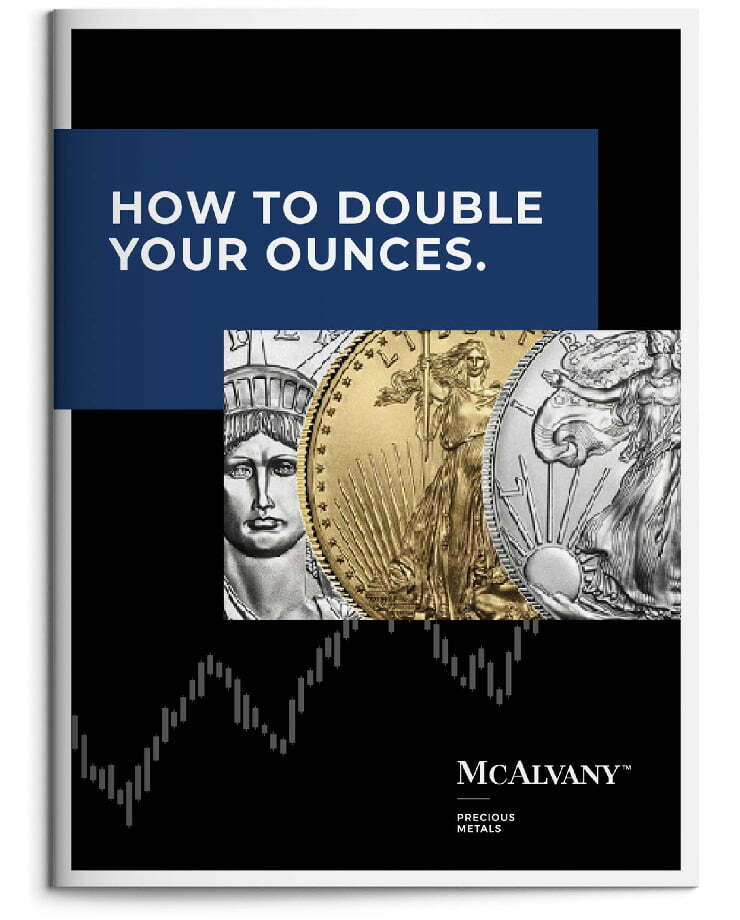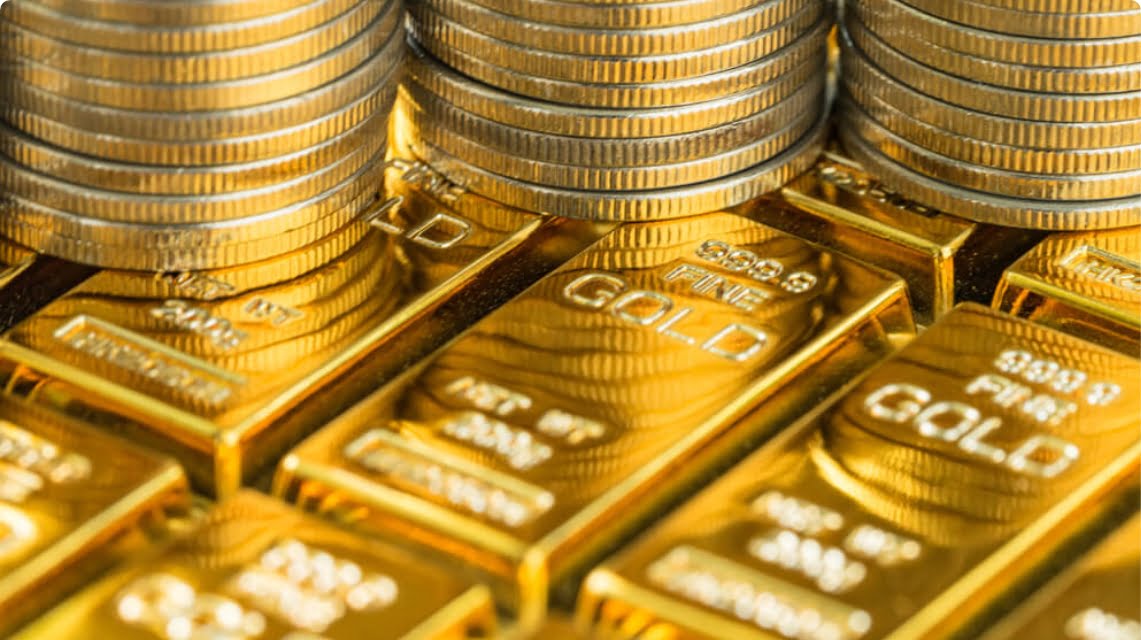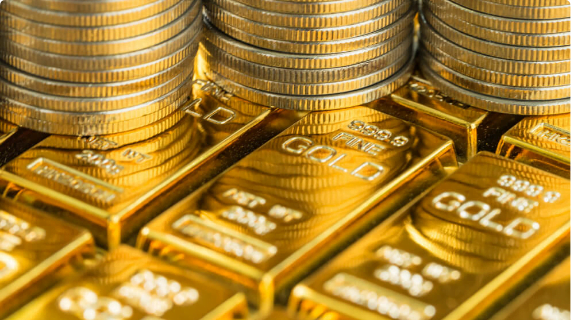Podcast: Play in new window
- A Look At The World Wide Bullion Market
- Why Gold Tariffs Would Ultimately Be Ineffective
- How The “Big Boys” Always Win In The End
* * *
Kevin: Welcome to the McAlvany Weekly Commentary. I’m Kevin Orrick, along with David McAlvany.
David: It’s interesting, isn’t it? Well, this is sort of a special commentary focused exclusively on gold. Tariffs on certain Swiss gold products have stirred enough speculation. I think it’s worth exploring a number of market nuances in an effort to bring some insight.
Kevin: You just told me you’re reading a book that I love called, Surely You’re joking. Mr. Feynman. It’s about Richard Feynman, the physicist. But surely, Dave, you’re joking. I mean, let’s talk about tariffs a little bit because this has been an interesting week.
David: And from one day to the next. This may be resolved by the time this is aired, which is interesting.
Kevin: True.
David: So there was an assumption by industry practitioners that tariffs would not apply to precious metals, as they had up to recently been specifically exempted. Metals are too critical as a reserve asset. They move amongst central banks and they play back and forth from one bank to the next. The ebbs and flows of the above-ground inventories, it’s critical to reserve managers.
Despite that thinking, risk managers and lawyers insisted that the US exchange take on more inventory prior to and just in case tariffs were implemented. This goes back to the first quarter of 2024, and we actually began to see an as soon as tariffs were mentioned, late in 2024.
Kevin: Yeah, there was a lot of Swiss product being moved to the United States, wasn’t there?
David: Yeah. In the last quarter of 2024, first quarter of 2025, an extraordinary amount of Swiss product was moved to the US, and product from London as well. In fact, the amount from London was at one point bringing London inventories to worryingly low levels. In the first quarter of 2025, because of the threat of Trump’s tariffs, and again extending to gold, the totals imported into the states hit $38 billion. And if you look at our import-export numbers and the GDP statistics, they were skewed because of the scale, because of the size of that gold import. Distorted our import export numbers dramatically. But remember, the disruption, the distortion in supply would not have occurred without the threat of tariffs from the Trump Administration.
Kevin: Well, and Trump uses these things. This is the bully factor. I mean, he at this point is saying that the Swiss, they’re not playing fair.
David: Now, in response to elevated import figures from Cheese Land— We sometimes talk about Switzerland as Cheese Land.
Kevin: Stinky Cheese Land. When I was with you, you introduced me to stinky cheese.
David: Oh, but it can be delicious. Cave aged Gruyere is one of my favorites. But the Swiss are being accused of running an unreasonably high trade balance with the US. It’s ironic to the core that we are leveling a 39% tariff on those Swiss imports, which includes the kilo and hundred-ounce gold bars.
Kevin: So you mean imports into the United States, correct?
David: That’s correct.
Kevin: Okay. So let’s jump to a conclusion here, because there are a lot of listeners going, “Oh my gosh, I need to call in right away.”
David: Well, yeah, if I could offer my conclusion on the front end before setting that conclusion aside, and we can explore a couple more market details and minutiae. I don’t think the tariffs will stick.
Kevin: On gold anyway.
David: Correct. There is a flow of gold going both ways across the Atlantic. Mostly scrap from the US to Switzerland, and that’s for refining, and then refined product in the form of kilos and hundreds back to us. But let’s start with this. The CME’s largest single depository—that is the Chicago Mercantile Exchange—its largest single depository is run by JP Morgan.
Kevin: You mean Jamie Dimon?
David: Well, yeah. I mean, as a practice, JP Morgan is long gold and short the futures. Specifically short EFPs. EFP stands for exchange for physical, which is like an off-market arrangement. You don’t have to trade in the futures contracts and distort volumes when you use an EFP. It’s almost like a side agreement.
Kevin: It’s a gentleman’s agreement. Hey, don’t make us deliver.
David: Right. But it still is affected by a move in the futures market. So they are short the futures market, long physical gold.
In recent days, there’s been a problem with that trade. Spot gold has been flat to down while the December futures contract has moved considerably higher. In fact, the December contract has hit or taken out its new all-time highs.
Kevin: So let me ask, I mean, Jamie Dimon, he has a big, big hammer. Do you think he’s going to try to swing it at this point with Trump?
David: If you were Jamie Dimon running JP Morgan and you were getting margin calls on your EFPs, again, your exchange for delivery futures exposure, yes. So that’s the question, not if they’re getting margin calls, but how big are they?
Kevin: Okay, so Dave, how—
David: But truly you’re talking about the number on the speed dial. Which one would be using? You guessed it. It would be Donald Trump.
Kevin: Well, this is sounding strangely familiar to something that happened many years ago with the Hunt Brothers. Can you explain how that would be like that?
David: Yeah. In at least one respect, this replay is the vulnerability that CME members faced during the Hunt brothers’ cornering of the silver market. You had Merrill, you had Mocatta, a handful of other firms that were getting margin calls in the tens and hundreds of millions of dollars. And Mocatta was really smack dab in the middle of it. Two brothers on either side of the pond, and one of them making bets that the other brother couldn’t cover. And they start calling the CME, asking for help, crying for help, right?, because they’re on the brink of insolvency.
Kevin: Well, and just a reminder for our listeners, Mocatta Metals is a 500-year-old metals firm. They had an office in New York in the World Trade Center, and they also have an office in London.
David: So the CME was responsive. They were protecting the members from bankruptcy, and I think that’s where the similarities end, because at that time, silver was in scarce supply, and that is not the case with gold today. In fact, if you look at CME inventory coverage of open interest, it currently sits at about 86%. There’s not a threat of an eminent short squeeze in the gold market. There is no cornering of the market today. There is no scarcity of product today, but there is in all likelihood margin calls happening for J.P. Morgan, which will elicit a call to the White House. That kind of madness has to stop.
So I would expect, sometime in sort of the next 2, 3, 5 days, for this to be resolved. December futures would not be diverging from the spot price to this degree if tariffs were not in play. So you’re dealing with unintended consequences in this case, and it lands very hard and very close to home for the CEO. Frankly, he has the ear of the administration. So again, I think that would be a strong reason why the tariffs don’t stick.
Kevin: Okay, so let me play devil’s advocate. Let’s go ahead and take the other side, though. Let’s say they do.
David: Trump sticks with a 39% tariff. In that case, over a long enough time frame—more contracts, people take delivery of them, more of the exchanges for product will make sense to investors with futures gold exposure—and you could see CME inventory drained. And then you really could see a supply squeeze, taking prices considerably higher in a very short period of time. Again, I don’t think that’ll be the case, but if you left the tariffs in place for 90 days, I think you could see CME inventories really put to the wall. Would the CME defend against a squeeze as they typically have, ratcheting up required margin, things like that? You bet.
Kevin: Okay. But there is product available at this point. I mean, especially the smaller stuff right now, it seems like there’s a lot in the market.
David: And by the way, if CME was in that position, there is enough of these dynamics which are well understood by traders, and given the activity in Q1 where you had a lot of exchange for delivery occurring, I think you’d have a lot of contracts delivered on an even quicker basis. So in that scenario, it would likely only drive more investors to the physical market.
But you’re right, there’s no real threat of that happening in the short run. There is ample product available, particularly smaller format product. One ounce coins and bars are trading cheap, really cheap. We talked about last week how the World Gold Council figures had coin and bar demand in the US dropping by 37% quarter-over-quarter. In fact, you’ve got products so cheap that the bid on most gold today is below its melt value.
And as that has remained the case for some time, where there’s more supply than demand, traders have been taking gold below spot and melting it down, having it refined domestically, turned into exchange-deliverable bars for which they can receive the spot price.
So quick math, this is kind of a fun exercise. As a trader, if you can buy and melt down 5,000 ounces of gold, you convert it into exchange-deliverable bars and take advantage of the current soft bid to pick up small format product at, say, 2% back of the melt price. I’m buying product, 5,000 ounces, at today’s price. I’m buying product worth $16,985,000, roughly $17 million. And then I’m turning it around— Let me say this differently.
I’m buying product that at the spot price has a value of right at $17 million, and then I’m turning around and paying the retail person who wants to liquidate, they’re only getting 16,000,645. So on the trade, you pick up $340,000 for every 5,000 ounce tranche that heads to the melting pot. On the other hand, if I’m paying 97% of spot, so I go 3% back of the melt value, it’s a $509,000 profit on the transaction. And that’s not bad for a day’s work. You just need a healthy balance sheet to move a bunch of product, and then rinse and repeat.
Kevin: This is— Part of it’s tragic because some of these coins will— They’ll never be minted again, $20 gold pieces from a hundred years ago getting melted down like this. But what I think about it, Dave, it’s almost like there’s this golden goose. Okay, this goose that lays golden eggs. And somebody doesn’t really realize that the goose lays golden eggs and so they eat it, and that goose will never lay another golden egg. Well see, that’s what’s happening to the product that’s out there. So every person who owns $20 gold pieces or some of this older product, if they just hold on or buy more, the actual population is just diminishing pretty quickly.
David: And so there’s really two kinds of players in the industry. One that has, let’s call it an unlimited balance sheet. They will buy the product and sit on it and wait for the premiums on that product to return, and they’ll profit from that added premium returning to their inventory. Or you’ve got the industry players that I was describing who have a healthy balance sheet, but it’s not an infinite balance sheet. Product keeps on coming in. What do you do with it? You reach your saturation point and you have to do something with the inventory. And if your inventory is in the form of a non-exchange-deliverable product, then you’re maxed out. The only way to expand your balance sheet again, expand your ability to continue to buy product, is to melt it down. Because once you turn it into an exchange-deliverable bar, now you have the benefit of futures contracts and dealing with the leverage implicit to a futures contract.
Kevin: Yet what we’ve seen with these coins in the past is we’ve seen 50, 75 even 100% premiums in the past. What I’m talking about, the old $20 gold pieces, the retail investor, Dave, right now, on average, has it all wrong. I mean, they’re thinking, “Oh, gold’s at an all-time high, better sell.”
David: I agree. Retail investors are getting this all wrong. Liquidating into this market might seem right as gold hit $3,500 an ounce and has consolidated sideways over the last three to four months. But even that sideways consolidation is not how a market puts in a peak. You’ve got profit taking, you’ve got moving to cash, whatever the justification is for a liquidation, this bull market has a lot further to run.
Last year, as gold was breaking out from the 2200 level, we talked about how technically you have a setup which opens up a seven to eight fold move from the lows set in December of 2015. We’re talking about $8,000 an ounce. I mean, if you wanted to jump back into the archives, Jim Sinclair hasn’t been alive for a couple years now, but he used to make certain price projections and—
Kevin: He would’ve picked a higher number.
David: In a bull market, he was pretty good at picking the number, almost to the exact number. So I mean, I could jump back into the Sinclair archives for price projections of $12,544 or even 50,000 an ounce. And frankly, those aren’t numbers I can find a path to. But 3,500 is an interim level in this long-term structural bull. The sellers are creating a very unique opportunity.
Kevin: So in 53 years, okay, this company’s been around 53 years. Your dad started it, and your mom, in 1972. They have seen some anomalies in this market, but the greatest anomaly probably just happened this last week, Dave.
David: Yeah, I mentioned my dad on the last program. He is ordinarily looking for bullion product which is recognizable in Asia. Why? Because he lives in Asia. 24 karat fabricated by a sovereign mint. That’s the specs that he’s looking for, and there is an abundance of that product available right now. In addition to that product is every variety of US gold coin, which is also incredibly cheap.
So here’s the deal. Inventory capacity is finite. At a certain number of ounces, the wholesale market’s willingness and ability to keep on buying simply evaporates. The only way to continue to provide the service of liquidating product into the market is to convert it into something exchange-deliverable, and therefore re-liquefy. In the process of re-liquefying products that have always sold at premiums and which are now selling at bullion prices, again, it sets up this very interesting opportunity. You’re getting the same price as bullion on the bid, and that today is near or below spot. That stuff is getting melted down,
Kevin: Which is remarkable, because if we just go back in time to 2008 through about 2011, we had the hardest time getting this product that’s being melted down. And I could go back to the late eighties. Same thing. You could not— We had waiting lists for people to buy $20 gold pieces in 1989.
David: I asked a couple of industry insiders in recent days, when have you seen prices for pre-33 gold, or pre-65 silver if we’re talking about junk silver, when have you seen prices like this? And they paused for a moment and then said, “Never.”
Kevin: Never. With a capital N.
David: Right. So for someone with an extended time frame, there is an incredible value to pick up here. Coins that on average have traded with a bid, a bid, what you would get on liquidation, a bid north of 20, 30, 50% and more have next to no premium today. If we’re right about the Western investor returning to the metals market and demand once again outpacing supply, then look at those segments in the market where supplies are naturally even more limited because the product hasn’t been made for 50 to 150 years. And as I said, the product is being melted today so that future supplies will be even less than they were previously. That’s where you want to be shopping.
Kevin: Well, and what’s hilarious about this, again, it’s sad in one way, but it’s hilarious because crisis in one person’s camp is opportunity in another. But just think, what?, three, four years ago on Reddit, these guys said, “Hey, go buy GameStop.” And that was a stock that was going to go out of business, and they ran it through the roof. But then they came out and said, “Go buy US American Silver Eagles,” which, let’s face it, Dave, in the long run, they have an unlimited supply, and they ran through the roof. We took advantage of that with ratio trades. But think about it. What if the Reddit guys actually said, “Hey, go buy $20 gold pieces that haven’t been minted for a hundred years.”
David: Yeah. And I’m thinking about traders and sophisticated investors, family offices and hedge funds that look for anomalies. They look for things that aren’t usually the case, and they want to take advantage.
Kevin: Value. Value, like Buffett.
David: And a macro hedge fund will try to read Fed policy, try to read what is going to happen next in terms of an FOMC meeting or a change of the guard at the FOMC, and try to determine what the monetary policy course will be over the next 30 days, 90 days, next year. And they try to position ahead of that. In recent days, we have Stephen Miran being appointed to one of the positions at the Fed. Stephen Miran, you might recall, was the person who wrote the paper in November of last year talking about what some have called the Mar-a-Lago Accord, the playbook that actually got him appointed to the Council of Economic Advisers reporting directly to the president, and telling him what should be done in terms of our monetary policy, our fiscal policy.
Kevin: And he wants a lower dollar.
David: The conclusion from the paper is, yes, we have to have a devalued dollar. This is how we will rebuild our industrial base. So again, from a trader’s perspective, from a very macro perspective, you look at the change of the guard at the Fed, you anticipate what’s going to happen in the years ahead in terms of our monetary policy. You look for trade anomalies, and you position accordingly.
Kevin, I would say that we, or I’ll just speak for myself, I have conviction on the gold trade. We also have an extended time frame. I can tell you that the current setup is baffling, not only to me, but to every industry veteran I’ve talked to. Pre-33 gold, pre-65 silver is a no-brainer.
Kevin: So let me ask you, though, because our clientele, I have to say, Dave, 53 years of doing business and talking to these people and hopefully having good relationships with them, we don’t have people who are calling for the most part and saying, “Hey, it’s all-time highs. Let’s go ahead and sell.” But there are people who were buying at Costco who didn’t know the first thing about gold a couple of years ago. They’re saying, “Hey, this is all-time highs. This is just like Bitcoin. I’m going to sell some.”
David: That’s right. A lot of liquidations and a lot of supply being melted down. And you’ve got a mix of the old US twenties. You’ve got Krugerrands. You’ve got those Costco ounces made by PAMP, the one ounce bars. Costco sold them for PAMP, but there is no two-way trade through Costco. You’re talking about a retail buyer out in the marketplace with very little conviction, no relationships in the industry, and now with a desire to liquidate gold. Hundreds of thousands of ounces pressuring the whole metals complex in unique ways. And again, these are the PAMP one ounces. These are the Maple Leaves. These are Eagles. You name it. They are going to the melting pot. And on the other side, you’ve got industry insiders picking up a few points.
Kevin: Sometimes a pendulum swings just a little, and there’s not a lot of opportunity. I mean, this seems extraordinary to me, Dave.
David: Yeah. If an investor doesn’t appreciate the extraordinary economic backdrop we have today, they can’t begin to appreciate the need for holding wealth insurance. I mean, we’re not talking about a trade to generate a few bucks, right? This is so much more fundamental in terms of the role that gold plays in a portfolio. And so you’ve got folks that have traded in and now they’re trading out in front of what will be one of the greatest moves in the US dollar gold price ever. 4,400 is around the corner. 5,800—I think we absolutely will see that. $8,000 an ounce, that’s as far as I can see it going at this point. But to buy premium products at prices closer to spot than they’ve been in our 50-plus years in the business, it’s a must. So we’re looking at a setup where the behavior is aberrant. The market conditions are temporary. This is an opportunity that doesn’t last.
Kevin: I think about how much energy goes into picking MS63 Liberties. And I think that’s what your dad bought, right? Think of Drew Crowell, our coin buyer, going to Europe, going to various dealers, flying here, flying there, all these years, these decades. He’s been with us, what, 40-plus years. And they’re selling right now. The bid on those coins is pretty close to spot.
David: That’s right. So my dad bought MS63 Liberties at prices he has never seen in his 85 years of walking this earth. And he added junk silver, bags of dimes, quarters, and 50 cent pieces. The premiums on those bags are always jumping around. And we love that because you buy them when they’re cheap, you sell them when they’re expensive in exchange for additional and free ounces. And that serves as the basis of a silver to silver compounding of ounces.
Kevin: Okay. So if you’re going to buy something at an all-time high and you have the choice between a stock right now—tech stocks are just roaring right now—or gold, what do you do for the long run?
David: Well, I think one of the things is to note who’s buying, because in the stock market today, it’s the retail investor who is clamoring to own more tech stocks. And interestingly enough, you have a number of hedge funds that basically are saying, “We’ve got to play. The music is playing. We’ve got to get up and dance.”
Kevin: To keep their job.
David: Exactly, because if the market and the market indices outperform them, they can’t justify their 2% of assets under management and 20% take of all the profits.
Kevin: Right.
David: So they have to at least own those same companies—again, the retail favorites—and they’ll just add some leverage to the portfolio, have higher returns than the market, and get to collect their two and 20. So just like today’s current overvaluation in stocks, that state of affairs, that’s anomalous, that’s aberrant too, and is temporary. It won’t last. The current low and incredibly ridiculous prices in U.S. gold and silver products won’t last either.
Kevin: Last week you brought out something that you’ve been watching very, very closely, and that is when does the retail investor start to stir it up? We talked about Germany. The Germans are buying 250% more of the small gold product, and Europeans on average are buying more than 100%, but not here in the United States. But you’ve been watching for a breakout in silver, you’ve been watching for the gold miners to start to pick up and outperform, and those two things started to happen. So are we starting to hear? Let’s say we hear the train coming, maybe it’s not right crossing, but it’s up the valley.
David: The statistics we shared last week, German coin and bar demand was increased by 250% last quarter. Across all Europe, I think it was around 124%. In the U.S., down by 37%. And I think it’s fair to say that in Europe there’s more of a focus on geopolitics. And in the U.S., we’ve seen enough on the nightly news to now want to just tune it out, ignore it, and we’ve moved on to bigger and better things. So last week we talked about the breakout in spot silver, the outperformance of the precious metals miners relative to bullion gold. And the third thing we mentioned was the increase in demand for ETF products year-to-date.
The Western investor is returning, and the price action in those subcategories confirms it. I would say that if you have conviction on owning gold, and if you have a longer time frame for holding it, this is your opportunity to organically increase your ounces via what we do in-house, ratio trades and premium trades, and to be able to increase your ounces by 20%, 30%, or even 50%.
Kevin: Okay, so let’s use an example, Dave, that we’ve been using. I brought up Silver Eagles. We had clients positioned in new Silver American Eagles when the premiums were low, and those premiums got up to 50%, 60% over the price of bullion. We swapped them out into 1,000 ounce bars, 100 ounce bars of silver, and we waited. And then the premiums came back down and we went back into Silver American Eagles for the next round. That type of ratio trading actually allows you to buy the metal. Theoretically you’re buying it at maybe a third or half the price of what you would’ve.
David: Yeah, if you frame it that way, I think that’s healthy. Just said differently, if you position opportunistically in the products I’m talking about, and again, I would say this is the best case scenario, you’re in line for a 50% gain in ounces for free. And that is the equivalent of buying gold today for 1,700 an ounce or buying silver at under 20 bucks.
Kevin: So that’s what we call compounding ounces. And it’s something that you can do just by working with somebody who understands these ratios and the premiums that are normal.
David: And I will say this, on the bags of junk silver, you typically see a 10%, 15%, 20% bump in premium. We’ve never seen a 50% premium. You’d have to go to the pre-1921. If you go to Peace and Morgan dollars, those bags actually have carried premiums upwards to 100%.
Kevin: Right.
David: So it depends on the product. But I think, again, the idea of buying silver for under 20 bucks, that’s the net benefit to you. Buying a premium product at no premium today, compounding those premium dollars into free ounces is the same as getting to buy $1,700 gold, same as buying $20 silver. So if you could roll back time and accumulate ounces at those price levels, would you? If you could put in motion a strategy that opens the possibility of owning more ounces for free, why wouldn’t you? The art of trading and compounding wealth over time has more to do with seeing what others don’t see than perhaps anything else.
Kevin: And do you think the family being in the business 53 years has helped with that seeing?
David: Well, hopefully, I’ve shared a few insights today that will help you do just that. But that’s exactly what we’re doing as a family.
* * *
You’ve been listening to the McAlvany Weekly Commentary. I’m Kevin Orrick, along with David McAlvany. You can find us at mcalvany.com and you can call us at 800-525-9556.
This has been the McAlvany Weekly Commentary. The views expressed should not be considered to be a solicitation or a recommendation for your investment portfolio. You should consult a professional financial advisor to assess your suitability for risk and investment. Join us again next week for a new edition of the McAlvany Weekly Commentary.
















